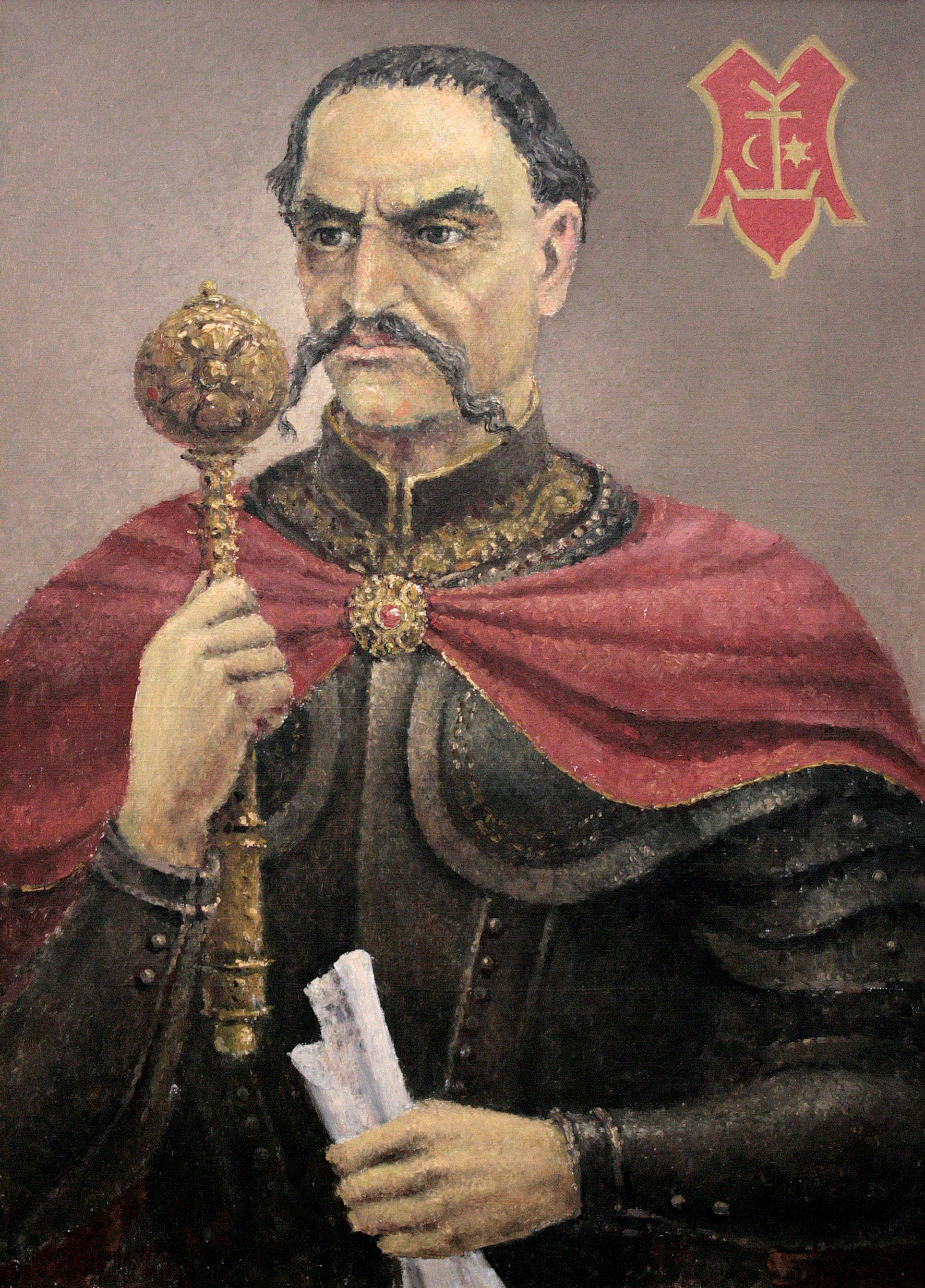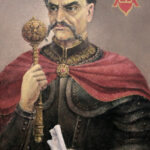Ivan Mazepa
Mazepa Ivan Stepanovych of the Coat of Arms of Kurch (03/20/1639, a village on the Kamianka River, later named Mazepyntsi village of Kyiv Voivodeship, now Bilotserkivskyi district of Kyiv region — 21 / 22.09.1709, Varnytsya village, near Bender, Republic of Moldova) — a military man, politician, statesman, Hetman of Zaporizhia Army, patron of culture and education.
A descendant of the Mazepa-Kolyadinsky noble lineage on the paternal line and of the ancient Mokievsky noble lineage on the maternal line.
He studied at the Kyiv-Mohyla Academy approximately in 1650-1657, as well as in some of the institutions of the Commonwealth, presumably at the Jesuit College. While serving for the Polish king, he visited Holland, Italy, France, and Germany, where he studied, in particular, artillery.
He gained considerable military and diplomatic experience at the court of the Polish king, leaving his service there in 1663. From 1669 he served for Hetman Petro Doroshenko and afterwards for Ivan Samoilovich. In 1687, with the consent of Moscow, he was elected hetman.
As a result of the defeat of the troops of the Swedish King Charles XII and Mazepa in the battle of Poltava on June 27, 1970, the hetman, together with the remains of his troops, left Ukraine. He died in 1709 in the village of Varnytsia near Bendery town, and in the spring of 1710 his body was moved to the town of Galati (now Romania); later the tomb was destroyed.
I. Mazepa’s hetman period was marked by a rapid development of Ukrainian culture, education, and art. With his support, temples were erected, books were printed, and the Chernihiv College was opened.
The Kyiv-Mohyla Academy, in which the hetman studied, was under his special patronage. Mazepa financially supported the construction of a needed (due to a significant increase in the number of students) academic building (the so-called Old Academic, or Mazepa’s Building), and earlier – the stone Epiphany Cathedral on the site of the wooden Epiphany Church – the main temple of the Kyiv Brotherly Epiphany monastery (destroyed by the Soviet authorities in 1935).
Every year, the hetman provided financial grants to the students-bursaks. In addition, Mazepa supplemented the library of the Academy and participated in solemn academic meetings. With his support, the Academy received royal certificates, partly related to its legal status and property. The hetman also supported the Kyiv-Mohyla students. This charity work was not only appreciated by the academic corporation but also called for another, temporary name of the institution: the Kyiv-Mohyla-Mazepa Academy.
Source: Kyiv-Mohyla Academy Reflected in Names: XVII-XVIII, 2001.

